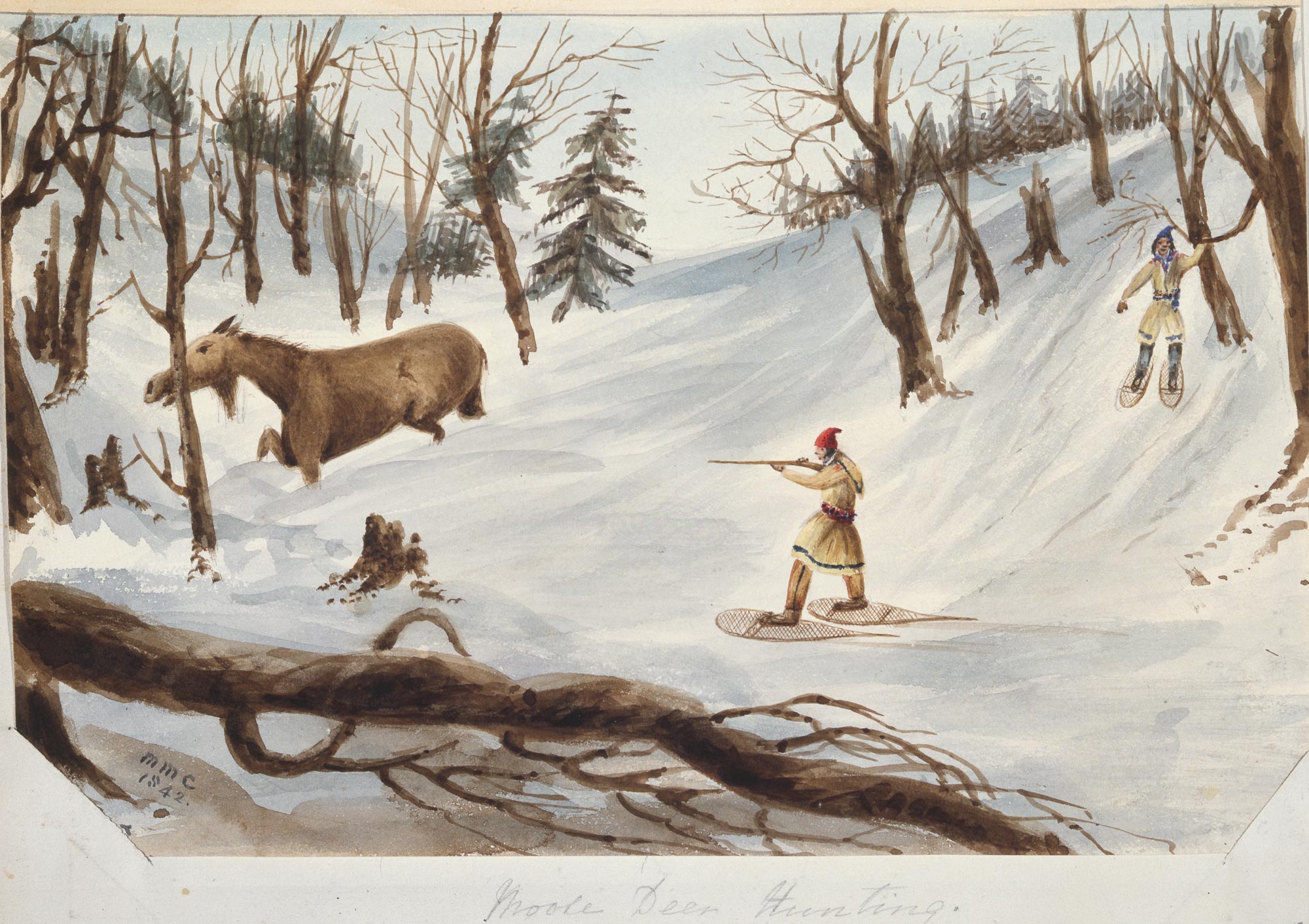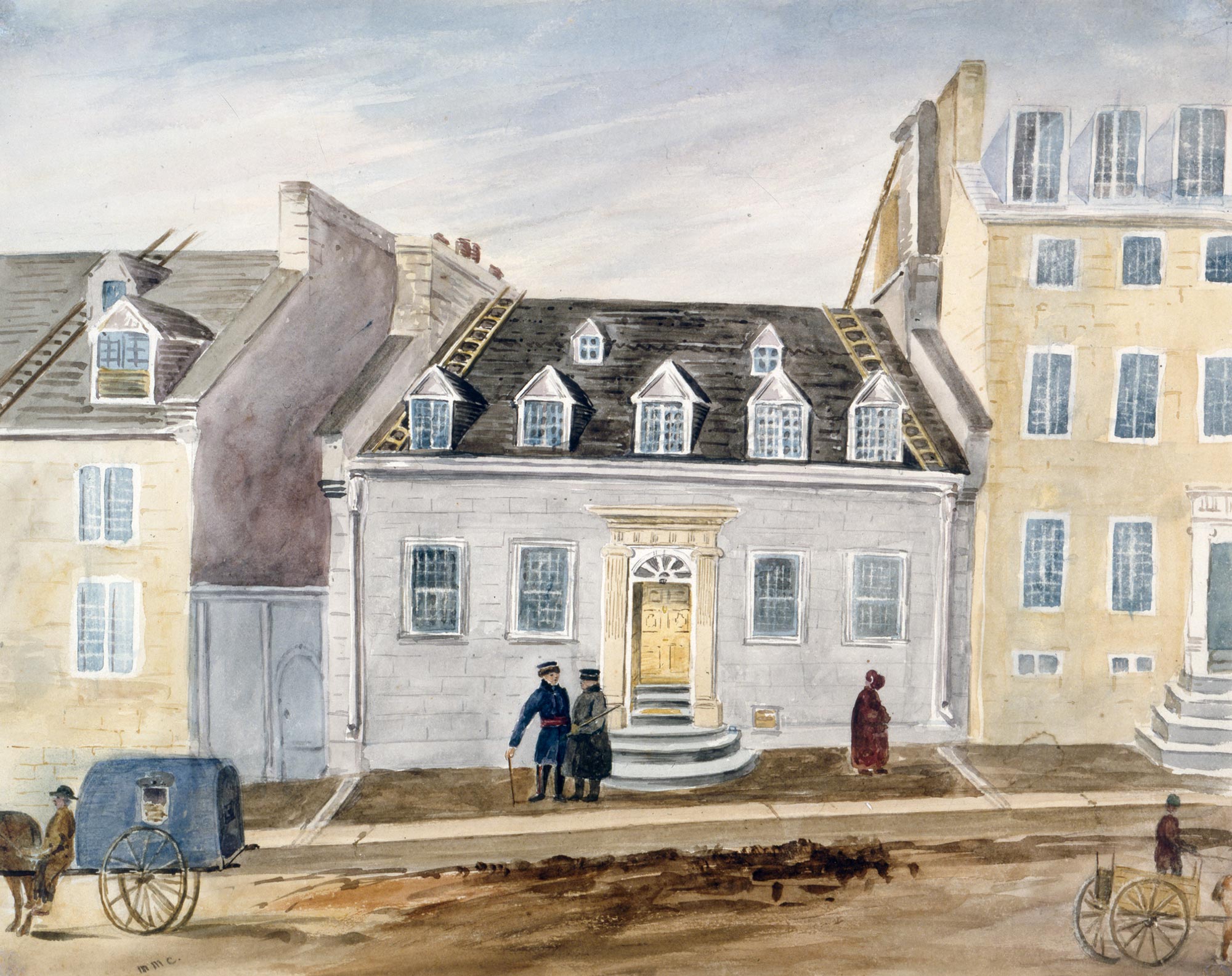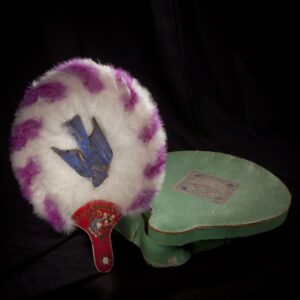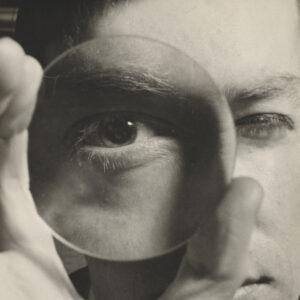Millicent Mary Chaplin (1790–1858)

Millicent Mary Chaplin, Moose and Deer Hunting, 1842
Watercolour over graphite with traces of scraping on paper, 29.8 x 37.6 cm
Library and Archives Canada, Ottawa
Millicent Mary Chaplin was an amateur watercolourist raised in Victorian England who helped shape the visual image of Quebec City in the nineteenth century. A middle-aged woman, she arrived in the city in the spring of 1838, when her husband, Lieutenant-Colonel Thomas Chaplin, was assigned there in the aftermath of the Lower Canada Rebellion of 1837–38. During her four-year stay, she maintained an album that served as both a personal journal and a travelogue and filled it with around 130 watercolours and drawings.

Nearly ninety of the watercolours depict the city and its surroundings, including panoramic and landscape views, urban scenes, and representations of Indigenous encampments.1 Three compositions show Chaplin’s participation in a moose hunt with Indigenous guides at Lake Saint-Charles, north of the city. In one of these, she even inserted herself, seated in the foreground alongside a companion.2
Chaplin’s most significant contribution, though, lies in the depictions of her immediate surroundings and her more personal choice of subjects. We see this, for example, in the drawing Our House, Number 13 St. Ursula Street, Quebec, from July 1838 to September 1842, c.1838–40, which shows the Chaplins’ Upper Town home. (It still stands today.) This drawing is part of a sequence that focuses on domestic life. Chaplin’s observations in this section of her journal are sensitive and meticulous, rendered in a simple, clear style, and occasionally somewhat naive in the scaling of figures, which adds to the balance of her compositions. She also depicts her garden, the courtyard, and the outbuilding used as a stable, and she takes an interest in views captured from inside the house as well. From her dressing room window, for example, she portrays a splendid panorama of the St. Augustin wing of the Ursuline Convent and the rooftops of Quebec City, and beyond, the St. Lawrence River and the Laurentian Mountains.
Most of Chaplin’s works are original, but the artist also copied views by fellow British landscape painters who were active in the city during the summer of her arrival in 1838. These pieces reflect her membership within a small, informal community of landscape artists known as the Group of 1838.3 At the time, it was very common for women from affluent and aristocratic backgrounds to practise drawing and watercolour painting. Their education and social status encouraged them to keep sketchbooks to record the views and scenes they encountered during their travels abroad. Chaplin’s body of work aligns with that of other watercolourists and wives of high-ranking military officers, such as Elizabeth Frances Hale Amherst (1774–1826) and Katherine Jane Ellice (1812–1864).

 About the Author
About the Author
 More Online Art Books
More Online Art Books
 Acknowledgements
Acknowledgements